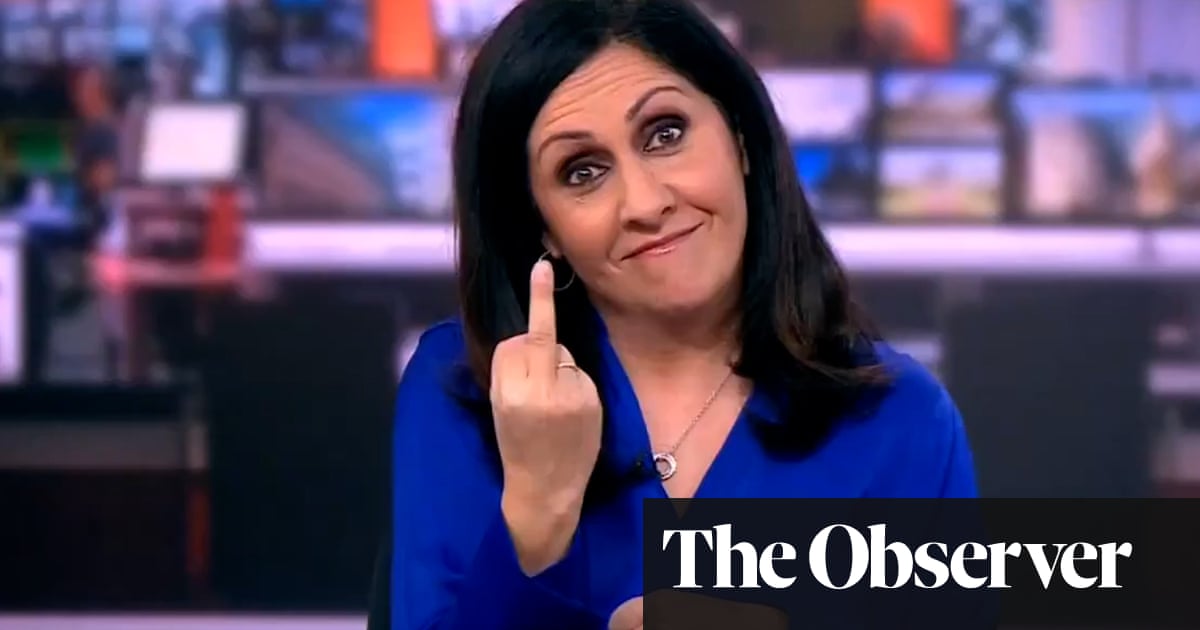
n the summer of 2019, Theo Anthony had a strange couple of weeks. ThenPresident Donald Trump provoked a spat with Baltimore-born congressman Elijah Cummings by calling his city a “disgusting, rat-and-rodent-infested mess”, which led to Anthony’s 2017 documentary Rat Film getting “algorithmically thrown into the mix”, as the director puts it. Viewers of the quasi-experimental examination of how the city’s redistricting affects and oppresses its people understand that Anthony primarily takes the constantly shuffled-around rats as a metaphor for the local government’s callous treatment of its least powerful citizens. Nonetheless, it was adopted as a Republican talking point from bots to influencers to a tweet from Donald Trump Jr, and rebranded as an indictment of Democratic leadership’s filthy, vermin-infested failure.
“I watched it go up and up, and all along, no one watched the film,” Anthony tells the Guardian over the phone from his home in Hudson, New York. “It was just getting used as ammunition in this debate. The main link that was being shared was for the PBS screening of the film, which was two years old at that point. That’s how you know they weren’t actually watching it. They were like, ‘Trump Jr is playing five-dimensional chess by recommending Rat Film!’ But his followers thought he was saying this on the night PBS would be showing it, so they go to their local listings looking for it and it’s not there. Rather than open the linked article and see that it was two years out of date, they instead decided that there was a liberal conspiracy to yank Rat Film from the airwaves. It mutated into this whole other thing. I was horrified, fielding calls from, like, Tucker Carlson’s people.”
This unsettling notion that an image can be transmuted into its diametric opposite through de-contextualization, selective framing and good old lying has now formed the basis of Anthony’s latest and most ambitious film, the new All Light, Everywhere. He focuses on surveillance and the cop-worn body-cam in specific as his key topics, exploring the headquarters of the Taser, drone and camera manufacturer Axon in search of insights on the police state’s expansion. But this inquest soon gives way to a more expansive interrogation of the treachery inherent to every photo and frame of video, warped and modified and presented with purpose. Through an eclectic approach spanning a primitive 19th-century camera shaped like a shotgun, first world war-era pigeon spies, and a present-day Baltimore community meeting over a proposed all-seeing digital eye in the sky, the mind-expanding film arrives at a sobering conclusion: objectivity is a reassuring lie, and those who claim to have attained it cannot be trusted.
“It felt all along like the film was going to be about everything and nothing,” he says. Though there was no quick-and-easy elevator pitch for Anthony to give potential distributors when All Light, Everywhere wowed audiences in its premiere at last January’s all-online Sundance film festival, the opening minutes provide a succinct mission statement of sorts. Superimposed on top of X-rays of an iris and pupil, subtitles explain that the human field of vision has a blind spot where the optic nerve connects to the eyeball, but that the brain “invents a world to fill the hole at the center of it” without our noticing. Looking closer at the very act of looking emerges as the higher imperative linking together the many areas of Anthony’s curiosity.
“In my previous work as a journalist, I was invested in the relationship between people telling the stories and people whose stories are told,” Anthony says. “I thought that was my main work, as something I’d explored in the past, and the camera always felt like the most obvious thing in the room yet the least talked-about. It’s the reason why we’re here all together, it clearly shaped behaviors, and that dynamic wasn’t being inspected so much. I’m always looking for a way in to that.”
He found one such entry point in the response to the killing of Freddie Gray by Baltimore PD, as law enforcement circled the wagons while protesters demanded greater accountability. The public soon pressured the department into adopting the chest-mounted camera for all on-duty officers, under the presumption that this would be more damning than exculpatory, but a visit to Axon’s offices reveals a partisan slant to their seemingly impartial methods. Little things exert a significant influence over how these auto-generated visuals convey perspective; shooting from the sternum instead of at eye-level makes a suspect seem taller and more imposing, and the fish-eye lens creates the illusion that they’re closer than they appear while rendering their movements choppy and more severe. We learn that the cameras’ technical sophistication is intentionally limited to replicate the officer’s imperfect sense of sight rather than capture all visual information possible, placing a theoretical jury in a position of empathy for the difficulties of the job.
These quiet, sinister tweaks of perception strike a mordantly comic contrast with the inspirational signs reading “WIN RIGHT”, “OWN IT”, and “BE OBSESSED” that hang around Axon’s assembly floor. “A lot of these surveillance companies use the language of transparency as part of their sales pitch, the idea being that these new tools and technologies will lead to an increase of transparency, and with that, through some magical empowerment, we’ll be able to hold government institutions more accountable,” Anthony says. “That’s great in theory, but rarely works out in practice. The tools end up obfuscating power relations more than anything. When we’re approaching them, we deliberately use the language of their sales pitch. We’d like them to be transparent about how their transparency is working. They’re presented with a choice to either fulfill their promise or risk hypocrisy.
“But transparency without tools of legibility doesn’t mean anything,” he continues. “In fact, when information is disclosed to the public about the ways in which policing data is reported, unless you’re also including a way for people to understand that data, to interpret it, to visualize it, to manipulate it, you’re not doing anything except lip service.”
Anthony exhorts his viewer to consider in all circumstances what they are and aren’t seeing, an imperative to “unpack, deflate and disassemble” that he extends to his own work. Beyond the clearer gaps in the film – during a body-cam demo at the local precinct, he’s made to stop rolling as the instructor plays an illustrative clip of the equipment in use – he exposes his own cinematic seams by including multiple takes of subjects getting spontaneous behavior “right”, or dropping in a special-effects shot and then showing the strings making it go. An epilogue acknowledges a subplot lost in the editing process, about students in a TV production class learning to wield the camera as a positive, collaborative tool. One cunning, disarming technique places Anthony’s Premiere Pro software interface onscreen, so we can watch him assemble the movie we’re already seeing. “I’m always trying to poke the man behind the curtain,” he says.
By his film-making philosophy, that healthy skepticism must necessarily be the foundation of all documentary, a field he sees as having largely slipped into disrepair. “The ways in which the term ‘documentary’ is thrown around, it’s really sloppy,” he says. “It’s an incredibly creative art form involving all these formal decisions, and the language most people use when talking about it makes it sound like a visual Wikipedia article, or a podcast you watch. Nothing against either of those two forms, but documentary is more than its subject matter … Having a fluency in the language of documentary is so important, because everything’s gotten jumbled together. We’ve got news stories that look like Errol Morris films that look like sponsored content – these things are slippery, and I’m constantly frustrated with this lack of mainstream discourse that treats documentary with the same artistry and intentional subjective decision-making that narrative or any other creative endeavor entails.”
The spirit of self-reflexive questioning poses a rebuttal and corrective to the in-vogue “true crime” miniseries flattening the pursuit of their truth into must-see binge-watching. Anthony knows that the only hope of finding something authentic is to turn inward, and shatter the pretense of authority. Whether the messaging comes from the police or a non-fiction film-maker, nothing can be taken at face value; the only conclusions worth holding are the ones we reach ourselves. “It’s such a failure of imagination to think the only role of documentary is to verify a truth,” he says. “The most noble cause for nonfiction is to reveal the fictions that structure these truths.”












